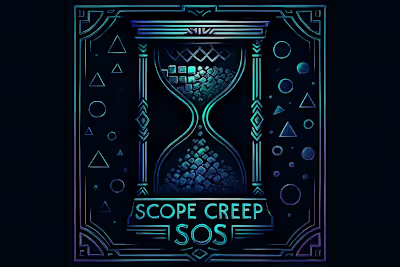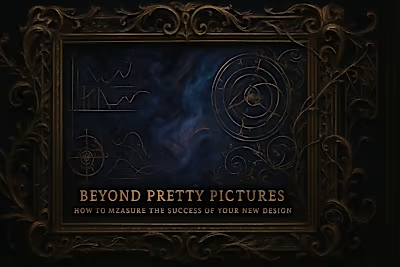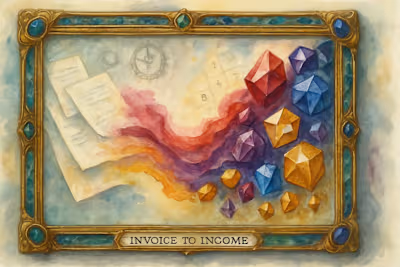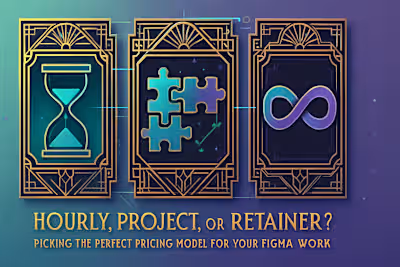The Ultimate Figma Handoff Checklist: 7 Things to Get From Your Designer
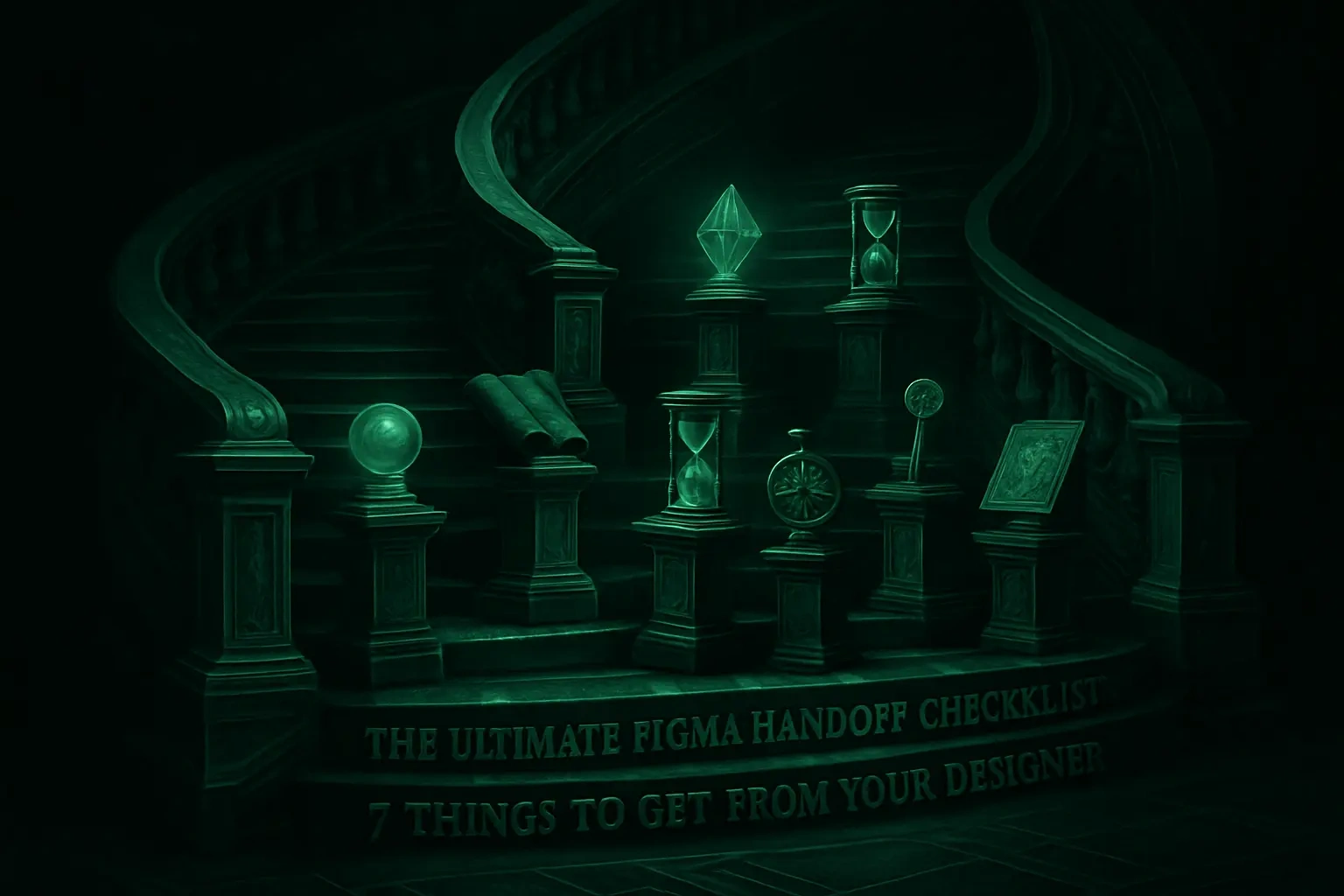
The Ultimate Figma Handoff Checklist: 7 Things to Get From Your Designer
The Core Deliverables: Your Digital Toolkit
1. The Editable Figma Source File
2. A Comprehensive Style Guide or Design System
3. All Exported Assets
4. Font Files and Licensing Information
The Knowledge Transfer: Ensuring a Smooth Transition
5. Interactive Prototypes and User Flow Diagrams
6. A Final Walkthrough Session
The Final Sign-Off: Administrative Closure
7. Copyright Transfer and Final Invoice
Wrapping It All Up
References
The Ultimate Figma Handoff Checklist: 7 Things to Get From Your Designer
The project is approved, and the design looks fantastic. But here's the thing - the project isn't truly over until the final handoff is complete. You might be tempted to celebrate early, but hold that champagne. A thorough handoff is crucial for a smooth transition to development and for your ability to manage and update the design in the future.
Think of it this way: you wouldn't buy a car without getting the keys, right? The same logic applies when you hire Figma designers. This checklist will ensure you get everything you need from your designer for a successful project completion. A key part of this is preparing for the next stage: the design-to-development handoff.
Without the right files and documentation, your development team will hit roadblocks. Future updates become a nightmare. And worst of all, you might not even legally own the design you paid for. Let's make sure that doesn't happen.
The Core Deliverables: Your Digital Toolkit
These are the non-negotiable files and assets that form the foundation of your new design. Without these, your development team will be blocked, and future updates will be a nightmare. Consider this your essential shopping list - you need every single item on it.
1. The Editable Figma Source File
This is the master blueprint. You need the original, editable Figma (.fig) file with all pages, layers, and components intact. Not a view-only link. Not a PDF. The actual, working file.
Why does this matter so much? Because designs evolve. Six months from now, you'll need to update that hero image. Or add a new feature. Or tweak the color scheme for a seasonal campaign. Without the source file, you're stuck.
Make sure the file includes:
All design pages (not just the final versions)
Component libraries
Design tokens
Any plugins or special settings used
Pro tip: Open the file immediately after receiving it. Check that everything works. Don't wait until you need it urgently to discover something's missing.
2. A Comprehensive Style Guide or Design System
Your designer should provide a detailed style guide within Figma that documents colors, typography, spacing, iconography, and component states. This is the rulebook that ensures brand consistency as your product evolves.
A good style guide isn't just a pretty document. It's a living reference that answers questions like:
What's the exact hex code for your primary button?
How much padding goes around form fields?
What happens when someone hovers over a link?
Which font weight is used for subheadings?
The best designers create this as a separate page within your Figma file. It should include:
Color palette with all primary, secondary, and neutral colors
Typography scale showing all font sizes and weights
Spacing system with consistent padding and margins
Component documentation showing all states (default, hover, active, disabled)
Icon library with usage guidelines
Without this guide, every future designer or developer will make different choices. Your brand consistency goes out the window.
3. All Exported Assets
This includes all icons, illustrations, and images used in the design. They should be provided in the correct formats (e.g., SVG for icons, optimized PNGs or JPEGs for images) and resolutions needed for development.
Here's what you should receive:
Icons in SVG format (scalable and crisp at any size)
Logos in multiple formats (SVG, PNG with transparent background)
Images optimized for web (compressed but still high quality)
Illustrations in their original format plus web-ready versions
Ask for these organized in clearly labeled folders. "Final-assets-v2-REAL-final" isn't a filing system. You want something like:
/icons/navigation/
/icons/social/
/images/hero/
/images/product/
Also request @2x and @3x versions for retina displays. Your users with high-resolution screens will thank you.
4. Font Files and Licensing Information
Ensure you receive the font files or clear instructions on where to purchase/download them (e.g., from Google Fonts). Crucially, the designer must provide any licensing information to ensure you are legally compliant.
This is where things get tricky. Many designers use premium fonts that look amazing but come with licensing restrictions. You need to know:
Which fonts are free (like Google Fonts)
Which fonts require licenses (and what type of license)
Where to purchase licenses if needed
Any usage restrictions (some fonts can't be used in logos or require special web licenses)
If the designer used custom or modified fonts, you need those files too. Don't assume you can just download them later. Some foundries change their licensing terms or discontinue fonts entirely.
Get this in writing. A simple document listing each font, its source, and licensing status saves massive headaches later.
The Knowledge Transfer: Ensuring a Smooth Transition
Files alone aren't enough. A good handoff includes a transfer of knowledge, ensuring your team understands the 'why' behind the design and how to use the files effectively. This is where good designers separate themselves from great ones.
5. Interactive Prototypes and User Flow Diagrams
Static screens don't tell the whole story. The designer should provide a link to the final interactive Figma prototype that demonstrates user flows, transitions, and micro-interactions.
These prototypes show:
How users move between screens
What happens when buttons are clicked
Loading states and error messages
Micro-interactions and animations
Mobile responsive behavior
A developer looking at a static design might assume a menu slides in from the left. But maybe it fades in from the top. Maybe form errors appear inline. Maybe there's a subtle bounce animation on button clicks. The prototype removes all guesswork.
Ask for prototypes that cover:
Main user journeys (sign up, purchase, key features)
Edge cases (empty states, error states, loading states)
Mobile and desktop versions
Any complex interactions or animations
User flow diagrams are equally important. These bird's-eye view maps show how everything connects. They answer questions like:
What happens after a user signs up?
How many steps are in the checkout process?
Where do error messages redirect users?
6. A Final Walkthrough Session
Schedule a call with the designer, your project manager, and lead developer. This session is for the designer to walk through the final files, explain the design system, and answer any immediate questions, preventing misinterpretations later on.
This isn't just a nice-to-have. It's essential. During this session, the designer should:
Walk through the Figma file structure (where to find what)
Explain the design system and how to use components
Demonstrate the prototypes and explain key interactions
Highlight any tricky areas that might confuse developers
Answer questions from your team
Record this session. Seriously. Three months from now when someone asks "Why did we design it this way?" you'll have the answer straight from the designer's mouth.
Prepare questions in advance. Common ones include:
How should this design scale for larger screens?
What happens if text runs longer than shown?
Are there any animations not shown in the prototype?
Which elements are most important for mobile?
The Final Sign-Off: Administrative Closure
The last step is to tie up all the administrative loose ends to officially and cleanly close out the project. This protects both you and the designer.
7. Copyright Transfer and Final Invoice
Ensure you have a written agreement that formally transfers the copyright and ownership of the final design assets to you upon receipt of the final payment. This protects both you and the designer and provides clear legal ownership.
Many people skip this step. Don't be one of them. Without proper copyright transfer, you might not actually own the designs you paid for. The designer could theoretically:
Use the designs in their portfolio without permission
Resell similar designs to competitors
Claim ownership if disputes arise
A proper copyright transfer document should state:
All design assets created for the project are transferred to you
Transfer happens upon final payment
Designer retains rights to show work in portfolio (if agreed)
Any exceptions (like stock photos or third-party assets)
Get this signed before making final payment. It's much harder to chase down paperwork after money changes hands.
The final invoice should clearly list:
All deliverables provided
Any outstanding items
Payment terms and methods
Project completion date
Keep all of this documentation together. Create a project folder with contracts, invoices, copyright transfers, and asset files. Future you will appreciate the organization.
Wrapping It All Up
Getting these seven items might seem like a lot to ask for. But each one serves a critical purpose in ensuring your project's long-term success. A professional designer will have no problem providing everything on this list. In fact, they'll probably appreciate your thoroughness.
Remember, a good handoff isn't just about receiving files. It's about ensuring continuity, maintaining quality, and setting your project up for future success. Take the time to get it right. Your development team, future designers, and future self will thank you.
Before you close out the project, do a final check:
✓ Editable Figma source file (opened and verified)
✓ Comprehensive style guide
✓ All exported assets (organized and labeled)
✓ Font files and licensing info
✓ Interactive prototypes and user flows
✓ Recorded walkthrough session
✓ Signed copyright transfer
Got everything? Excellent. Now you can pop that champagne. Your design project is truly complete, and you're set up for success.
References
Like this project
Posted Jul 6, 2025
Don't end your design project with a messy handoff. Use our comprehensive checklist to ensure you receive all necessary files, assets, and documentation from your Figma designer.






